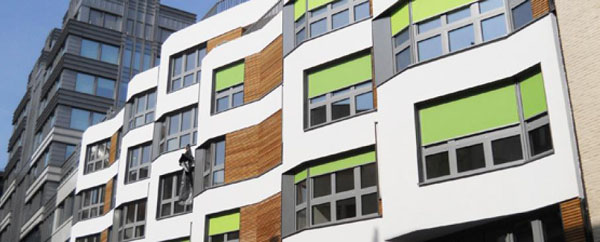Seattle prides itself on its forward green thinking. However, it lags terribly behind on forward green doing. Why is that? There may be other factors endemic to the banking system in the US and the financing of projects, but here are two specifically-Seattle issues:
- The City’s most valuable incentive to developers of deep green buildings, the additional height bonus, is at odds with the wishes of many immediate neighbors of these buildings. Thus, each new deep green building is greeted with opposition, instead of excitement and encouragement.
- Because of this opposition, the City sets up barriers to the granting of these incentives instead of providing technical or financial assistance to design teams and developers to help them achieve their deep green goals and grant them the incentives.
Those barriers add time and cost to projects that are pushing the envelope, making it less likely that design teams and owners will pursue the construction of innovative buildings.
City of Seattle rightly grants an incentive for something we desperately want and need, deep green buildings. However, in classic Seattle passive-aggressive style, while the incentive is saying “Yes, please go ahead and do this! We want you to do this!” the path to achieving that incentive is filled with pain and trouble. Why would the City choose to offer a height bonus instead of a financial award? Because height bonuses are free. It doesn’t cost the City anything to allow a developer to increase the height of their building. Once the building is built though, the increased property taxes from the larger building will help to pay for other needed city services. [Correction 7/2018: The City is prevented by State law from giving cash awards to developers.]
Councilmember Nick Licata’s Resolution 31400 to establish a Green Building Advisory Board illustrates my second point. On his blog, Licata says:
In response to concerns raised over the Skanska project [Stone 34] by the surrounding community, the Bullitt Foundation, and Living Building Challenge representatives, I have introduced Resolution 31400. It calls on the City to provide updates and enhancements to its Living Building Challenge and Seattle Deep Green pilot programs. Resolution 31400 also requests the Department of Planning and Development (DPD) to form a standing Green Building Advisory Board to advise the City on sustainable building practices; to screen proposals for eligibility; and to assist in developing new or updated sustainable building programs.
In other words, according to Councilmember Licata’s expressed intentions, the Green Building Advisory Board will be a watchdog group of green building professionals and community representatives charged with making sure no unworthy buildings are granted the height bonus, arousing the ire of neighbors. The Green Building Advisory Board will be punative in function rather than helpful and educational.
At the meeting of the Planning, Land Use and Sustainbility Committee for Resolution 31400 on May 8th, Diane Sugamura, head of Seattle’s Department of Planning and Design (DPD) said that “a handful” of projects are “in the pipeline” that would be affected by the Resolution over the next two years–that is, three or four. Three or four buildings out of how many that will be built in the City of Seattle over the same period?
This is a program that is not working.
This is in stark contrast to Brussells, Belgium, where their extraordinarily successful Exemplary Buildings program has, since 2007, facilitated the construction of 117 ultra-low-energy green buildings–totalling nearly 3 million square feet. Over twenty-three buildings per year! Nearly half of those buildings are Passivhaus. There, winners of the three competitions held since the inception of the program have been given cash awards of $12 per square foot, technical assistance in achieving their goals, and their projects have been massively publicized. (Including a nice book.) Ninety per cent of the financial award goes to the owner of the building, and ten per cent goes to the design team. (See my earlier blog post on the head of the Exemplary Buildings program Joke Dockx’s visit to Seattle for more.) For the Bullitt Center, the award would have been about $600,000.
As a result of the success of this program, the government of Brussells has mandated that as of January 1, 2015, Passivhaus will be required for all office, institutional and residential buildings, both single- and multi-family built in the 62-square-mile region. (Resolution 31400, like Seattle’s Climate Action Plan, makes no mention of Passivhaus.) [Update 7/2018: Brussels now has over 15 Million square feet of Passive House and net zero buildings. That is approximately 216 Bullitt Centers.]
As of this writing in Seattle we have two Living Building Challenge Buildings (out a total of four in the entire United States) and one Seattle Deep Green building under construction. Seattle does have a fair number of LEED-certified buildings, but at 85% of current code, the energy-conserving bar is set very low for City-required (for City projects over 5,000 SF) LEED Silver, and four out of five of those LEED Silver buildings will have to be renovated by 2050 if we are going to achieve carbon neutrality. (Yes, virtually all. Stockholm Environment Institute’s Carbon Neutral Plan for Seattle postulated that 80% of Seattle’s building stock would have to be renovated to something like Passivhaus standard– that is, to 10% of current energy code–by 2050.)
How can we encourage projects that meet that carbon neutral goal NOW; that do not have to be expensively renovated within the next 37 years? I suggest a new program similar to Brussells’ Exemplary Buildings program, combined with Passivhaus.

